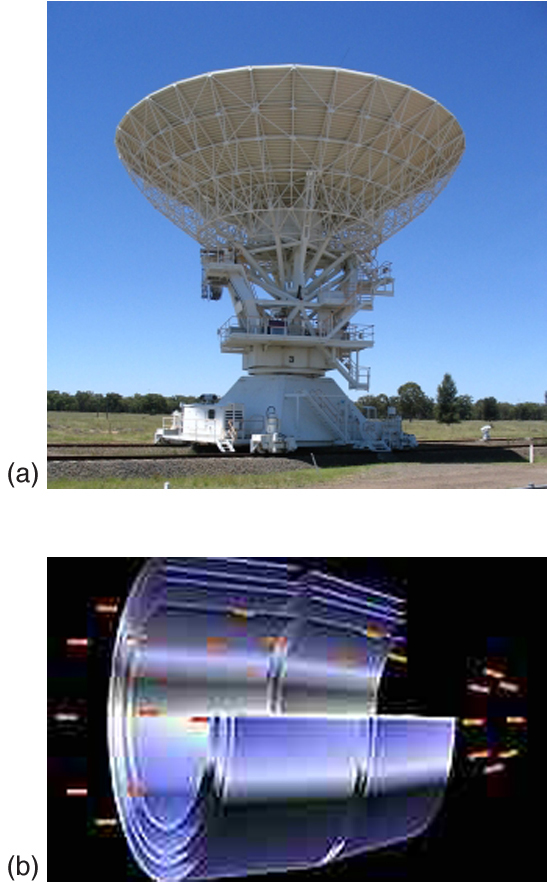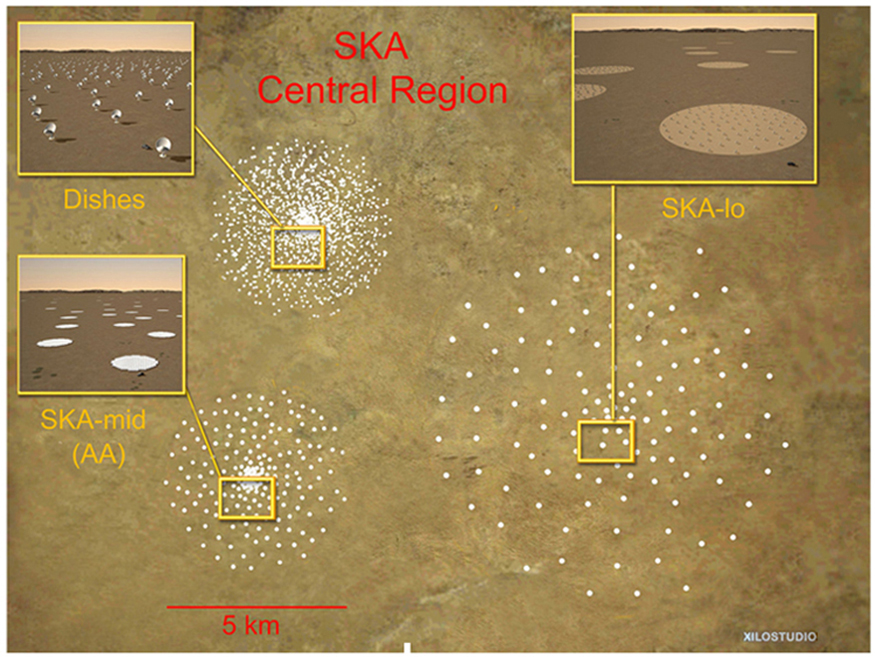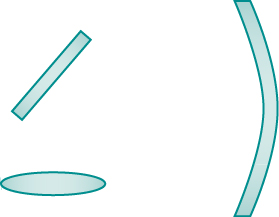| << Chapter < Page | Chapter >> Page > |

A current exciting development is a collaborative effort involving 17 countries to construct a Square Kilometre Array (SKA) of telescopes capable of covering from 80 MHz to 2 GHz. The initial stage of the project is the construction of the Australian Square Kilometre Array Pathfinder in Western Australia (see [link] ). The project will use cutting-edge technologies such as adaptive optics in which the lens or mirror is constructed from lots of carefully aligned tiny lenses and mirrors that can be manipulated using computers. A range of rapidly changing distortions can be minimized by deforming or tilting the tiny lenses and mirrors. The use of adaptive optics in vision correction is a current area of research.

Which of the following is an advantage to using a concave mirror in the construction of a telescope?
(d)
A spherical mirror is used to construct a telescope.


Two concave lenses, of focal lengths 500 mm and 20 mm, are used in the construction of a telescope. Given any potential arrangement, what is the largest possible magnification the telescope may have?
(c)
If you want your microscope or telescope to project a real image onto a screen, how would you change the placement of the eyepiece relative to the objective?
Unless otherwise stated, the lens-to-retina distance is 2.00 cm.
What is the angular magnification of a telescope that has a 100 cm focal length objective and a 2.50 cm focal length eyepiece?
Find the distance between the objective and eyepiece lenses in the telescope in the above problem needed to produce a final image very far from the observer, where vision is most relaxed. Note that a telescope is normally used to view very distant objects.
A large reflecting telescope has an objective mirror with a radius of curvature. What angular magnification does it produce when a focal length eyepiece is used?
A small telescope has a concave mirror with a 2.00 m radius of curvature for its objective. Its eyepiece is a 4.00 cm focal length lens. (a) What is the telescope’s angular magnification? (b) What angle is subtended by a 25,000 km diameter sunspot? (c) What is the angle of its telescopic image?
A binocular produces an angular magnification of , acting like a telescope. (Mirrors are used to make the image upright.) If the binoculars have objective lenses with a 75.0 cm focal length, what is the focal length of the eyepiece lenses?
Construct Your Own Problem
Consider a telescope of the type used by Galileo, having a convex objective and a concave eyepiece as illustrated in [link] (a). Construct a problem in which you calculate the location and size of the image produced. Among the things to be considered are the focal lengths of the lenses and their relative placements as well as the size and location of the object. Verify that the angular magnification is greater than one. That is, the angle subtended at the eye by the image is greater than the angle subtended by the object.

Notification Switch
Would you like to follow the 'College physics for ap® courses' conversation and receive update notifications?